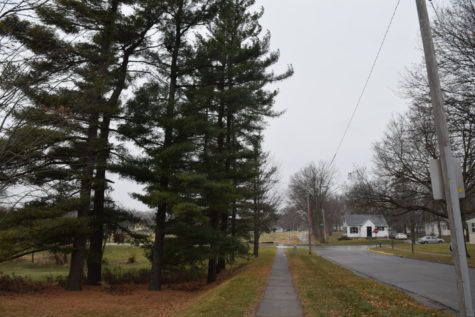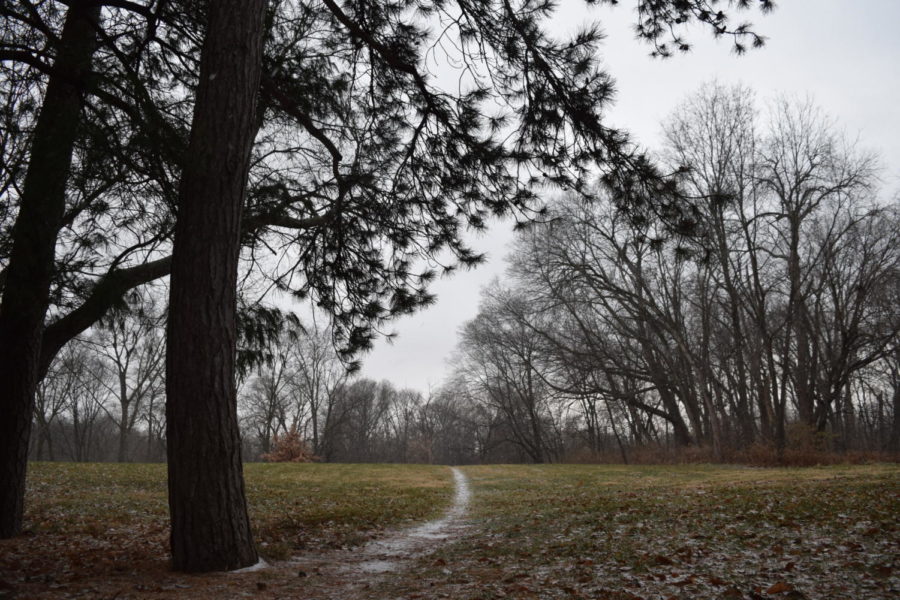Welch Avenue fire station looks to arboretum for new home
December 28, 2022
Ames Fire Department is looking to move the fire station on Welch Avenue to a portion of the arboretum — land originally acquired for horticultural research, now used for recreation.
The department is exploring whether or not the corner of Arbor and State Street is buildable. The plot of land is currently home to the arboretum, owned by Iowa State University. The fire department hopes to have a report to the Ames City Council by the end of 2022. Some residents who live along Arbor Street expressed concerns about conserving the trees and species occupying the land.
Rich Ketcham has lived in Ames for nearly all 66 years of his life. He lives across from where the potential building will take place on Arbor Street. Ketcham attended Iowa State for his bachelor’s and master’s degrees. Two years ago, Ketcham said he heard the City Council had the potential project on a meeting agenda.
“In this day and age, to watch an area get plowed under for more building just seems ludicrous to me personally,” Ketchum said.

Limited options
Ames Fire Chief Rich Higgins said safety is one of the reasons for the move. Firefighters currently have to back the apparatus into Station Number Two on Welch. There is a back door and back drive at Station Number Two, but it is the same spot for department parking, making it inoperable.
“You can imagine on a busy Thursday, Friday [or] Saturday evening how scary that can be with all the students in there,” Higgins said. “There’s just a high pedestrian traffic area.”
Even during the weekdays, Higgins said the pedestrian traffic during the daytime hours at the intersection of Welch and Chamberlain is still present. Students travel from their apartments to campus and back, making pedestrian safety a concern for the department.
“It takes the whole crew and then sometimes even law enforcement officers on those busy Thursday, Friday [and] Saturday nights to help stop pedestrian traffic so that we can back the engine in safely without compromising the safety of people in that area,” Higgins said.
As the city grows in population, Higgins said the relocation would allow the department to cover more of west Ames. The department has an emergency response goal to reach 85% of the community within five minutes of emergency calls. Moving the department to the arboretum would allow the department to reach the assisted living and nursing homes within that range.
The Ames Fire Department is also having conversations with people in the neighborhood. In January 2020, there was an open house at the Ames Middle School where the public in those neighborhoods saw the potential plan and asked questions. The department also held another outreach event in July of 2021, where Higgins talked with residents of the area and answered questions about the potential relocation.
Again in August, Higgins partook in a similar event with neighborhood residents. From these events, Higgins said residents aired concerns about losing nature and view due to the relocation.
“We recognize the need for fire protection, but in all honesty, they have a fire department building on Welch Avenue, and I haven’t heard a compelling case to leave it,” Ketcham said. “I can understand why they might want to, but by the same token, I can see where there might be better places to put it that may cost some money on the part of the city.”
Residents were also concerned about noise from the sirens. Higgins said the department doesn’t always turn sirens on right as the apparatus leaves the station. Often it isn’t until they reach a busy intersection.
“On the other side, they appreciated the fact that they would have a quicker response,” Higgins said. “They understood that [there would be] an overall improvement for our response time for the entire community.”
Higgins said he understands the residents’ concerns about the loss of nature and extra noise. The department would work with Iowa State University to get a bond issue passed to ensure as many trees are saved as possible. The goal would be to build a fire station that would be a part of the area.
“We don’t want it to stick out like a sore thumb,” Higgins said. “We want it to be part of the arboretum as much as we can be, so we would preserve as many trees as we could because we want those there for that fire station as well.”
Building in the arboretum
As of now, the department has a “rough footprint” of what the layout could look like. But first, the engineers working with the department must establish if the site is buildable. To purchase the land, Iowa State University would need approval from the Board of Regents.
“When you look at the corner on the arboretum at the amount of earthwork that it would require to make that suitable for building on, you just shake your head,” Ketchum said.
Once the department gets the land assessment reports back on the site, Higgins said the department would do many more events to collect feedback from Ames residents.
“Right now, our focus is really just finding out; is this even a buildable site?” Higgins said. “If so, then we need to do a lot more outreach and make sure we’re listening to our customers and understanding what kind of impact we have on that area.”
Higgins said there were no parking lots or private properties that would meet the requirements of the new station. If the department had pursued private property, residents would have had to be displaced, Higgins said. If the arboretum site comes back unsuitable, then the department will consider other locations.
“We don’t want to displace any occupants to put a fire station up,” Higgins said. “Some of the areas we’re looking at could potentially do that. [They] would remove potential single-family homes or even apartments…That’s not the first priority, to displace anybody.”
Higgins said they want the architect to design the stations to conserve as many trees as possible while allowing the emergent response to access State Avenue. There would be a back drive coming off Arbor Street to allow the fire truck to drive into the station.
What is the arboretum?
The arboretum is a part of the cross-country course and used for casual recreation, according to Chris Strawhacker, a campus planner for Facilities Planning and Management.
Ketcham sees the arboretum as an escape where Ames residents walk their pets and sled in the wintertime.
“It was intended as an area to go and get away from academic life for a while, much like Reiman Gardens,” Ketcham said. “It is a green space, and having lived there for almost 30 years, you see people use that area around the year.”
According to Iowa State University Campus and Its Buildings, a history of Iowa State buildings by then-university architect and plans coordinator H. Sommerfield Day, plans for the arboretum in 1953 included over 2,400 species and plant life, all labeled in the learning laboratory.
“Over time, it became more of a recreational-type space where the actual arboretum function was really replaced eventually by Reiman Gardens that sort of serves as the university’s arboretum space,” Strawhacker said.
History of the “fuzzy” boundaries
The fire station is a city project, but the land belongs to the university. Therefore, the city requested permission from the university to examine the location for feasibility. This isn’t the first time there has been a proposal to develop on the arboretum.
While at Iowa State, Ketcham said he remembers discussions of extending Hyland Avenue to the sports complex, cutting through the arboretum. Ketcham said many students rejected the idea.
“It was really something to watch,” Ketcham said, “because, at that time, every student was assessed an activity fee, and they didn’t want to see their money be used to basically plow under the arboretum.”
According to the Iowa State University Campus and Its Buildings, in 1925, the Iowa State Student reported the arboretum was “destined to become one of the most important plots for the midwest” by introducing new plants, shrubs and trees. But progress on the research garden was slow until 1940.
By 1961, a committee was developed to assess the use of the arboretum. As reported by the Iowa State Daily in 1967, some plans to add prairie grasses and natural plant materials that require minimum maintenance were suggested. According to the Iowa State University Campus and Its Buildings, the improvements never came to fruition as “originally planned.”
Professor R. E. Buchanan served as the experiment director when the arboretum was proposed. The Iowa State Daily reported Buchanan “blamed the administration for its lack of interest” in the project.
Strawhacker said the site is now lawn with remnants of trees from the arboretum construction. There is a “fuzzy line” that separates the arboretum from the Southwest Recreation Complex and the cross-county course, Strawhacker said. This is because the cross-country course uses portions of the arboretum.
“Having been in Ames as a student, we realize the value of having green space,” Ketchum said. “As a student, there are times you just need to get away and go relax. So it pains me to see that area get developed.”


















John klaus | Jan 10, 2023 at 12:15 pm
Thank you for your historical perspective on uses of the ISU Arboretum.
It is often a factor in the decision equation. Because Dr. Buchanan did not get all that he wanted as an arboretum, people today may be able to get the fire station they need.